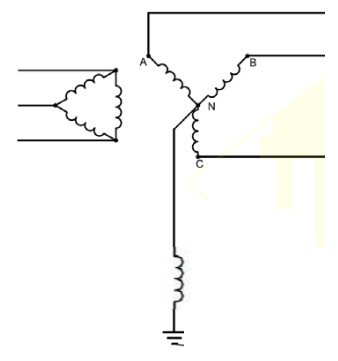In a reactance grounded system, the neutral is connected to the ground through an inductance (inductive reactance). The magnitude of the ground fault current can be limited to a value close to the three-phase short circuit current of the system (since it is a function of the phase to neutral voltage and the neutral impedance).
Fault current levels in a reactance grounded system
In order to prevent the occurrence of transient overvoltages, reactance is chosen in such a way as to limit the ground fault current to between 25% and 65% of the three-phase short circuit current. For example, if the three phase fault current of a system is 10000A, then the value of inductance must be chosen to limit the current to 6500A to keep the transisent overvoltage under control. This is quite high when compared to the fault current in a resistance grounded system. Hence it cannot be an alternative to low resistance grounding.
The current flowing to through the neutral during ground faults is a function of neutral reactance. Therefore in a reactance grounded system, the fault current is used as the critera for the selection of neutral reactance rather than refering to the neutral reactance directly.
In practice reactance grounding is used in generators to ground the neutral conductor to limit the ground fault currents to a value not greater than the three phase fault current contributed by the generator. Inductive grounding can be also seen in less expensive applications where the desired fault current is current magnitude is several thousand amperes.
One application is where a large substation feeds a medium-voltage distribution system, and the total zero-sequence impedance of the step-down transformers in the station causes the single line-to-ground-fault current to greatly exceed the magnitude of a three-phase fault, and ground-fault limitation is desired to keep the total fault current within the reasonable limits.
Reference: Industrial Power Systems Handbook by Beeman, Donald

